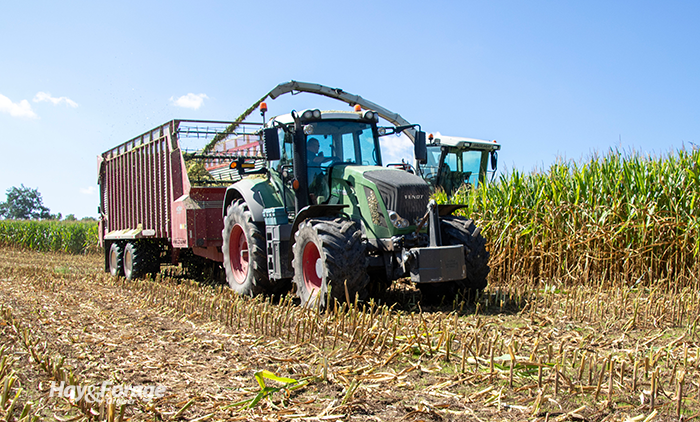Context is key for new developments |
| By Amber Friedrichsen, Managing Editor |
|
|
 Forage research is invaluable for producers to access and apply on their own operations, but that isn’t to say they should always expect the same results. A healthy dose of skepticism may serve farmers well when it comes to trying something new in their production systems. In the latest issue of the Farm Report from the Miner Agricultural Research Institute, Ev Thomas points out the discrepancy that can exist between research trials and on-farm implementation. He suggests some accounts can be misleading when they are taken out of context or fail to provide enough context in the first place. As an example, Thomas refers to an abstract that summarizes a study on replacing corn silage with triticale silage in dairy rations. While the abstract boasts clear benefits of feeding triticale silage, it does not include key details that dairy farmers would have to consider before adopting the practice. Readers would have to dig deeper into the article for that information. “Acknowledging that this was an abstract and not the entire research report, both triticale and corn silages seem to appear magically in the cows’ feedbunks with no information about yield, growing costs, or the many other factors that determine whether a crop is both practical and economical to grow, harvest, and store,” Thomas asserts. To put things into perspective, he applies the abstract description to dairy operations at the Miner Institute. With 500 high-producing Holsteins each consuming roughly 60 pounds of corn silage per day, Thomas calculated the farm needs to harvest approximately 4,000 tons of corn silage per year, considering lower inclusion rates for late-lactation cows. “Assuming 35% dry matter for both corn silage and triticale silage, I find it difficult to imagine how the Miner Institute could harvest and ensile 4,000 tons of dairy-quality triticale silage in a timely manner,” he states. To make a case for corn silage, Thomas explains that dairy farms can plant different corn hybrids with a range of maturity dates over a longer period of time to prolong the harvest window. “Between the difference in planting dates and relative maturity, farmers can take about two weeks to harvest their corn silage and have it all within a couple points of 35% DM,” he writes. But is that a viable strategy for harvesting triticale? “My concern isn’t if high forage quality is possible with timely planting, fertilization, and harvest of triticale, but how the whole process would extrapolate to large-scale dairy farming since there are no more hours in the day, nor days in the week, for a large farm than for a small one,” he asserts. The same concern can be expressed in reverse — large-scale research may not be feasible or practical to replicate on small farms. While nothing was necessarily wrong with the way the abstract was written, it goes to show how research can be presented in a way that overlooks important on-farm factors. The moral of the story is to put experiments, data, and dollars into context. Think critically about the potential outcome of different strategies and ask yourself farm-specific questions before investing time and money into a new practice. |
